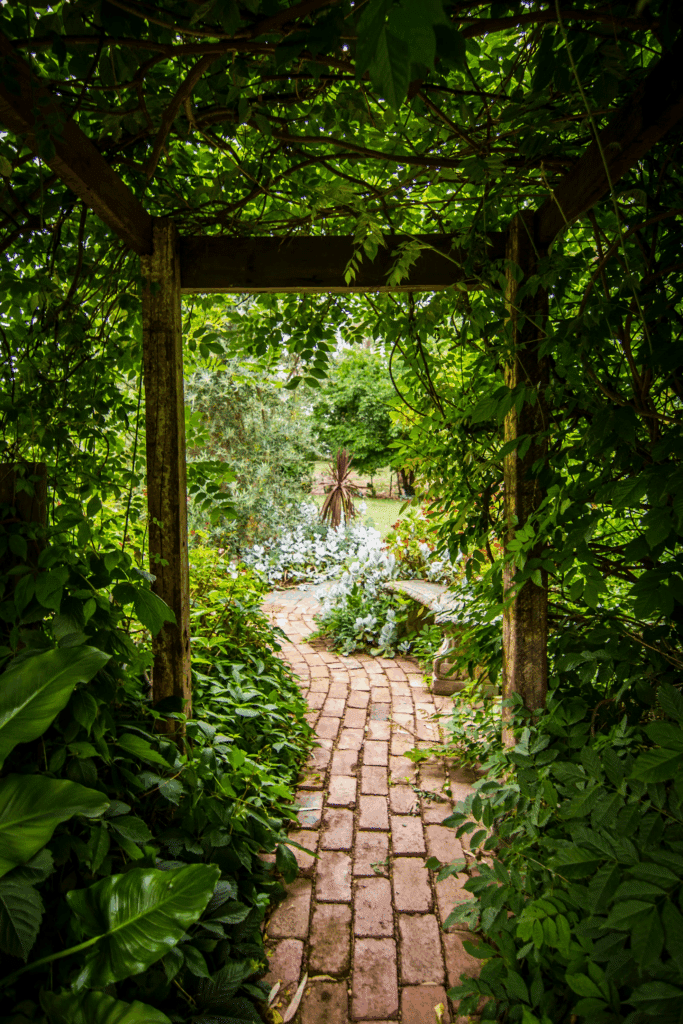This post reveals a unique and engaging DIY project that will add a touch of whimsy to your outdoor space while also serving a functional purpose. The centerpiece of our focus today? Rainboot flower pots. That’s right, old, unused rainboots can serve a new, environmentally friendly purpose, as they become the foundation for your blooming beauties.

We’ll unravel this intriguing concept step-by-step, providing detailed instructions and creative tips along the way. From choosing the right boots and plants to mastering the art of placement for maximum aesthetic appeal, we’ll cover it all. By the end of this, you will have all the knowledge you need to create your own captivating garden display using rainboot flower pots.
Whether you’re an avid gardener in search of a unique twist or a DIY enthusiast seeking your next project, this imaginative approach to garden décor is sure to delight. Prepare to roll up your sleeves, stir your creativity, and step up your garden game. It’s time to bring a splash of whimsy to your outdoor space with rainboot flower pots. So, let’s get started and help your garden step into the limelight!
Understanding the Concept of Rainboot Flower Pots
Rainboot flower pots, a novel gardening concept, has been gaining significant popularity among garden enthusiasts. As the name suggests, this approach involves the utilization of old or unused rainboots as flower pots, allowing for a unique twist to traditional gardening techniques.
This innovative gardening idea not only adds a splash of color and whimsy to your outdoor space but also provides an efficient way of recycling old footwear. They are also a perfect solution for people with limited garden space or those who wish to create a mobile garden.
Benefits of Rainboot Flower Pots
The primary advantage of rainboot flower pots is their versatility. They can be hung on walls, fences, or tree branches, or even placed on the ground, giving the gardener flexibility in terms of space utilization.
Furthermore, these flower pots can hold a variety of plant species, from flowers to herbs, and are easy to maintain. They also add an element of fun and creativity to the gardening process, making it more engaging for both kids and adults.
Creating Your Own Rainboot Flower Pots
The process of creating your rainboot flower pots is quite straightforward and involves a few steps:
Materials Needed
To get started, you’ll need the following items:
- A pair (or more) of old rainboots – Any size or color will do, from bright kid-sized boots to adult pairs.
- A drill or hammer and nail – For creating drainage holes.
- Potting soil – Choose soil appropriate for the plants you plan to grow.
- Plants of your choice – Think about size, sunlight requirements, and aesthetics.
- Gravel or small pebbles – Optional, to improve drainage.
- Gardening gloves – To keep your hands clean during the process.
- Trowel or small shovel – Useful for scooping soil.
Step-by-Step Process
- Clean Your Rainboots Thoroughly:
Start by giving your rainboots a good wash inside and out. Use warm water, mild soap, and a brush to remove any dirt, mud, or lingering odors. Let them dry completely before moving on to the next step. - Create Drainage Holes:
Using a drill (or hammer and nail if you don’t have a drill), create 3 to 5 holes in the sole of each boot. Drainage is vital for healthy root development. If you’re placing the boots indoors, consider setting a small dish beneath them to catch excess water. - Optional: Add Gravel or Pebbles:
For improved drainage, you can add a layer of small stones or gravel to the bottom of the boot. This helps prevent the soil from becoming waterlogged and promotes root health. - Fill with Potting Soil:
Choose a light, well-draining potting mix suitable for container gardening. Avoid using garden soil, which can compact and retain too much moisture in closed containers. Fill the boot about ¾ full, leaving room for your plant and root ball. - Plant Your Chosen Flowers or Greens:
Remove your plant from its original container and gently loosen the roots if they’re compacted. Nestle the plant into the soil inside the boot and fill in the surrounding space with more soil. Pat it down gently and ensure the plant sits upright. - Water Lightly and Position the Boot:
Give your new rainboot planter a gentle watering. Place it in a location that matches your plant’s light needs—sunny, partial shade, or fully shaded. Rainboot pots look great along pathways, on porches, or even hanging from fences or railings.
Maintenance Tips for Rainboot Flower Pots
Proper care and attention can ensure your rainboot garden thrives for months, or even years. Here’s how to keep your whimsical planters flourishing:
Store During Winter (if needed):
If your region experiences freezing temperatures, consider moving your rainboot planters indoors or into a sheltered area during winter to avoid cracking the rubber or harming sensitive plants.
Check Drainage Regularly:
Over time, drainage holes can become clogged with compacted soil or roots. Check periodically and use a small stick or toothpick to clear them if needed.
Water Mindfully:
Because rainboots are non-porous, water doesn’t evaporate as easily as with terracotta pots. Always check soil moisture before watering. Stick your finger into the soil—if the top 1–2 inches are dry, it’s time to water.
Feed Your Plants:
Like all container gardens, rainboot pots benefit from a regular feeding schedule. Use a balanced liquid fertilizer once every two to three weeks during the growing season to support blooms and lush foliage.
Prune and Deadhead Regularly:
Trim dead leaves, spent flowers, and overgrown stems to encourage new growth and keep your planter looking tidy.
Rotate for Sun Exposure:
If your boots are in a fixed position, occasionally rotate them so all sides of the plant receive sunlight evenly.
Replenish Soil Seasonally:
At the end of the growing season, consider replacing the soil or mixing in compost to refresh nutrients before the next planting cycle.
Watering and Fertilizing
Although rainboots are naturally waterproof, making them excellent containers for holding soil, this same feature can become problematic if proper drainage is not ensured. To avoid soggy soil and root rot, it’s essential to create drainage holes at the bottom of the boots using a drill or a heated nail. Place a layer of small stones or gravel at the base before adding potting mix—this further aids drainage and mimics a natural planting environment.
When it comes to watering, consistency is key. Overwatering is one of the most common mistakes in container gardening, especially in unconventional planters like boots. Use your finger to check the soil’s moisture level. If the top inch feels dry, it’s usually a good time to water. Remember, it’s better to water thoroughly but less frequently than to give your plants a daily splash, which can cause shallow root development.
Fertilizing is equally important. Plants in containers exhaust their nutrients quicker than those in garden beds. Use a balanced, slow-release fertilizer mixed into the soil at planting time, and supplement with a liquid feed every two to three weeks. If you’re growing herbs or vegetables in your boots, consider using organic options like fish emulsion or compost tea.
Sunlight and Temperature
The success of your rainboot planters also hinges on where you place them. Choose a location based on the sunlight needs of your plants. For instance:
- Sun-loving plants like petunias, marigolds, or tomatoes will thrive in areas that get 6–8 hours of sunlight daily.
- Shade-tolerant varieties such as impatiens, ferns, or coleus are better suited for covered porches or north-facing areas.
Rainboot planters are portable, which means you can move them around to follow the sun or protect them during heatwaves or frosty nights. During very hot days, the confined space of the boot can heat up quickly, potentially scorching the roots. Similarly, in colder months, the soil can freeze faster in small containers. Be mindful of seasonal changes and rotate your boots as needed, or bring them indoors during extreme weather.
Adding Personal Touches to Your Rainboot Flower Pots
One of the most delightful aspects of rainboot flower pots is the opportunity to infuse them with your own creativity and personality. You can paint them in vibrant colors or patterns that reflect your style or garden theme. Use waterproof acrylic paints and sealants to ensure the designs endure weather exposure.
For a rustic farmhouse vibe, try using muted tones with a distressed finish. For a child’s garden, go wild with glitter, stickers, and cartoon characters. You can even stencil in names for each plant or create a boot family with different-sized rainboots labeled “Mom,” “Dad,” and “Kids.”
Enhance the visual impact by arranging them in tiers on wooden crates, hanging them on a garden fence, or lining a pathway. Mix and match heights and colors to create contrast and depth. You can also add whimsical accessories like mini garden gnomes, fairy lights, or wind chimes to further amplify the charm.
Rainboot flower pots are more than just recycled planters—they’re a canvas for storytelling, a splash of color in your outdoor space, and a joyful nod to creativity. Whether you’re a seasoned gardener or a weekend DIYer, these unique containers offer endless ways to express yourself while nurturing nature.
Moreover, you can choose different types of boots (tall, ankle-length, etc.) and arrange them in unique ways to create a visually appealing display. Whether you choose to keep it simple or go all out with your creativity, the end result is bound to bring a touch of whimsy to your garden.
Creating Themes
Creating themed displays with rainboot flower pots opens the door to limitless creative expression in your garden or patio. One popular approach is to craft a culinary garden—each rainboot can host a different herb such as basil, thyme, mint, or oregano. This not only brings fragrance and greenery to your space but also provides fresh ingredients for your kitchen. Arrange the boots in a row on a garden bench or mount them along a wooden fence for easy access and visual charm.
For flower lovers, consider using rainboots to build a color-themed floral arrangement. Plant red flowers like geraniums or begonias in red boots, yellow daisies or marigolds in yellow boots, and so on. Grouping by color brings harmony and visual cohesion to your display and can even be tailored to the seasons—for example, using pastel flowers in spring or fiery tones in autumn.
You can also build holiday-themed displays, using rainboots in festive colors filled with plants and accessories to match the season. For Halloween, fill orange and black boots with mums and add decorative mini pumpkins. For Christmas, evergreen clippings, holly, and pinecones can fill red or green boots to bring a cheerful holiday touch to your doorstep.
Engaging Children
Rainboot flower pots are also a fantastic way to spark children’s interest in gardening. The process of turning something as familiar as an old boot into a planter excites their imagination and shows them how creativity and sustainability can go hand in hand. You can make this a fun weekend family activity: let each child pick a boot, paint or decorate it with their own designs, and choose their own plants to grow.

Encourage them to personalize their rainboot with names, stickers, or colorful drawings using weatherproof paint. This hands-on activity promotes responsibility and patience, as they must water and tend to their plant daily. It’s an excellent opportunity to teach them about plant life cycles, photosynthesis, and the importance of pollinators, all while having fun.
Some great starter plants for kids include marigolds, sunflowers, or small veggies like cherry tomatoes or radishes. These grow quickly, allowing children to see the results of their care within a short period of time—keeping them engaged and proud of their mini-gardens.
Conclusion
In conclusion, rainboot flower pots are more than just a quirky trend—they are a celebration of imagination, sustainability, and personal expression. Whether you’re organizing themed displays, growing your favorite herbs, or bonding with your kids over planting projects, rainboot planters allow you to blend charm and functionality in your gardening routine.
With just a bit of effort and inspiration, you can breathe new life into worn-out boots and create a garden that’s full of character, color, and joy. So dig out those old rainboots, grab some soil and seeds, and start turning your outdoor space into a blooming masterpiece that’s uniquely your own. 🌼👢🌱
The splash of color and whimsy brought about by these flower pots can be a mood-lifter, even on the dullest days. Moreover, this project can be a fun and engaging activity for kids, fostering their interest in nature and gardening. Rainboot flower pots are a cost-effective and eco-friendly way to spruce up your garden. They are a testament to the fact that creativity knows no bounds, especially when it comes to transforming mundane objects into beautiful garden décor.
So, why wait? It’s time to give your garden a quirky upgrade with rainboot flower pots. Remember, the only limit to your garden’s potential is your imagination. Make your outdoor space a vibrant and delightful place to be with this fun, unique, and sustainable gardening project.



